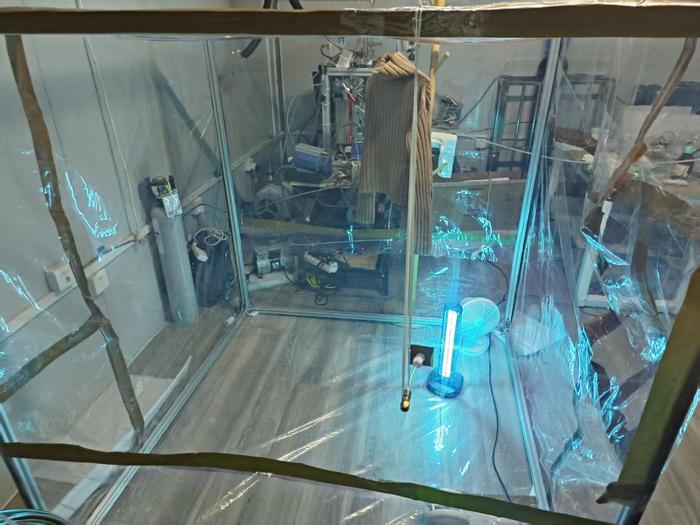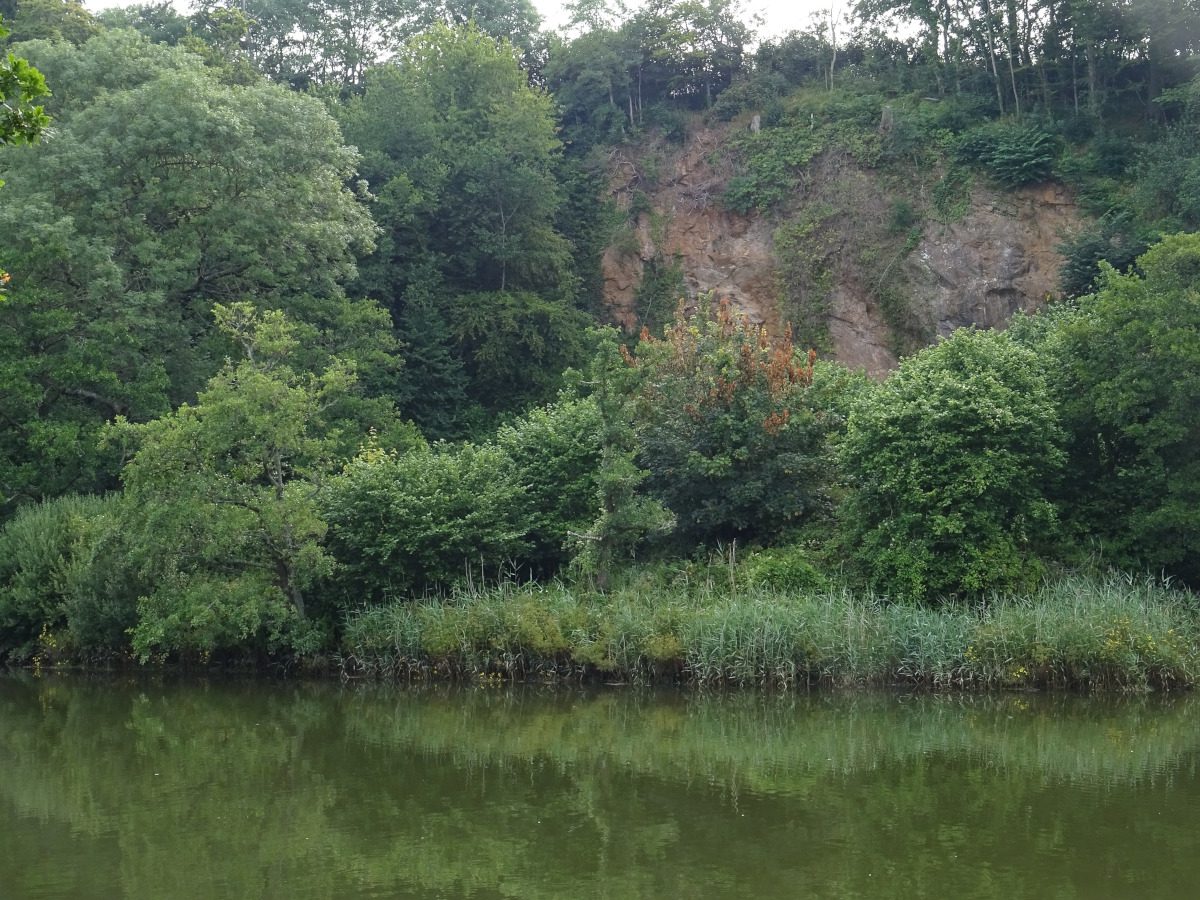Raquel Garcia has been fighting for years to clean up the air in her neighborhood southwest of downtown Detroit.
Living a little over a mile from the Ambassador Bridge, which thousands of freight trucks cross every day en route to the Port of Detroit, Garcia said she and her neighbors are frequently cleaning soot off their homes.
“You can literally write your name in it,” she said. “My house is completely covered.”
Her neighborhood is part of Wayne County, which is home to heavy industry, including steel plants and major car manufacturers, and suffers from some of the worst air quality in Michigan. In its 2024 State of the Air report, the American Lung Association named Wayne County one of the “worst places to live” in terms of annual exposure to fine particulate matter pollution, or PM2.5.
Explore the latest news about what’s at stake for the climate during this election season.
But Detroit, and several other Midwest cities with major shipping ports, could soon see their air quality improve as port authorities receive hundreds of millions of dollars to replace diesel equipment with cleaner technologies like solar power and electric vehicles.
Last week, the Biden administration announced $3 billion in new grants from the U.S. Environmental Protection Agency’s Clean Ports program, which aims to slash carbon emissions and reduce air pollution at U.S. shipping ports. More than $200 million of that funding will go to four Midwestern states that host ports along the Great Lakes: Michigan, Illinois, Ohio and Indiana.
The money, which comes from the Inflation Reduction Act, will not only be used to replace diesel-powered equipment and vehicles, but also to install clean energy systems and charging stations, take inventory of annual port emissions and set plans for reducing them. It will also fund a feasibility study for establishing a green hydrogen fuel hub along the Great Lakes.
The EPA estimates that those changes will, nationwide, reduce carbon pollution in the first 10 years by more than 3 million metric tons, roughly the equivalent of taking 600,000 gasoline-powered cars off the road. The agency also projects reduced emissions of nitrous oxide and PM2.5—both of which can cause serious, long-term health complications—by about 10,000 metric tons and about 180 metric tons respectively during that same time period.
“Our nation’s ports are critical to creating opportunity here in America, offering good-paying jobs, moving goods and powering our economy,” EPA Administrator Michael Regan said in the agency’s press release announcing the funds. “Delivering cleaner technologies and resources to U.S. ports will slash harmful air and climate pollution while protecting people who work in and live nearby ports communities.”
Garcia, who runs the community advocacy nonprofit Southwest Detroit Environmental Vision, said she’s “really excited” to see the Port of Detroit getting those funds, even though it’s just a small part of what’s needed to clean up the city’s air pollution.
“We care about the air,” she said. “There’s a lot of kids in the neighborhood where I live.”
Jumpstarting the Transition to Cleaner Technology
Nationwide, port authorities in 27 states and territories tapped the Clean Ports funding, which they’ll use to buy more than 1,500 units of cargo-handling equipment, such as forklifts and cranes, 1,000 heavy-duty trucks, 10 locomotives and 20 seafaring vessels, all of which will be powered by electricity or green hydrogen, which doesn’t emit CO2 when burned.
In the Midwest, the Illinois Environmental Protection Agency and the Cleveland-Cuyahoga County Port Authority in Ohio were awarded about $95 million each from the program, the Detroit-Wayne County Port Authority in Michigan was awarded $25 million and the Ports of Indiana will receive $500,000.
Mark Schrupp, executive director of the Detroit-Wayne County Port Authority, said the funding for his agency will be used to help port operators at three terminals purchase new electric forklifts, cranes and boat motors, among other zero-emission equipment. The money will also pay for a new solar array that will reduce energy consumption for port facilities, as well as 11 new electric vehicle charging stations.
“This money is helping those [port] businesses make the investment in this clean technology, which otherwise is sometimes five or six times the cost of a diesel-powered equipment,” he said, noting that the cost of clean technologies are expected to fall significantly in the coming years as manufacturers scale up production. “It also exposes them to the potential savings over time—full maintenance costs and other things that come from having the dirtier technology in place.”
Schrupp said that the new equipment will slash the Detroit-Wayne County Port Authority’s overall carbon emissions by more than 8,600 metric tons every year, roughly a 30 percent reduction.
Carly Beck, senior manager of planning, environment and information systems for the Cleveland-Cuyahoga County Port Authority, said its new equipment will reduce the Port of Cleveland’s annual carbon emissions by roughly 1,000 metric tons, or about 40 percent of the emissions tied to the port’s operations. The funding will also pay for two electric tug boats and the installation of solar panels and battery storage on the port’s largest warehouse, she added.
This story is funded by readers like you.
Our nonprofit newsroom provides award-winning climate coverage free of charge and advertising. We rely on donations from readers like you to keep going. Please donate now to support our work.
Donate Now
In 2022, Beck said, the Port of Cleveland took an emissions inventory, which found that cargo-handling equipment, building energy use and idling ships were the port’s biggest sources of carbon emissions. Docked ships would run diesel generators for power as they unloaded, she said, but with the new infrastructure, the cargo-handling equipment and idling ships can draw power from a 2-megawatt solar power system with battery storage.
“We’re essentially creating a microgrid at the port,” she said.
Improving the Air for Disadvantaged Communities
The Clean Ports funding will also be a boon for people like Garcia, who live near a U.S. shipping port.
Shipping ports are notorious for their diesel pollution, which research has shown disproportionately affects poor communities of color. And most, if not all, of the census tracts surrounding the Midwest ports are deemed “disadvantaged communities” by the federal government. The EPA uses a number of factors, including income level and exposure to environmental harms, to determine whether a community is “disadvantaged.”
About 10,000 trucks pass through the Port of Detroit every day, Schrupp said, which helps to explain why residents of Southwest Detroit and the neighboring cities of Ecorse and River Rouge, which sit adjacent to Detroit ports, breathe the state’s dirtiest air.
“We have about 50,000 residents within a few miles of the port, so those communities will definitely benefit,” he said. “This is a very industrialized area.”
Burning diesel or any other fossil fuel produces nitrous oxide or PM2.5, and research has shown that prolonged exposure to high levels of those pollutants can lead to serious health complications, including lung disease and premature death. The Detroit-Wayne County Port Authority estimates that the new port equipment will cut nearly 9 metric tons of PM2.5 emissions and about 120 metric tons of nitrous oxide emissions each year.
Garcia said she’s also excited that some of the Detroit grants will be used to establish workforce training programs, which will show people how to use the new technologies and showcase career opportunities at the ports. Her area is gentrifying quickly, Garcia said, so it’s heartening to see the city and port authority taking steps to provide local employment opportunities.
Beck said that the Port of Cleveland is also surrounded by a lot of heavy industry, and that the census tracts directly adjacent to the port are all deemed “disadvantaged” by federal standards.
“We’re trying to be good neighbors and play our part,” she said, “to make it a more pleasant environment.”
About This Story
Perhaps you noticed: This story, like all the news we publish, is free to read. That’s because Inside Climate News is a 501c3 nonprofit organization. We do not charge a subscription fee, lock our news behind a paywall, or clutter our website with ads. We make our news on climate and the environment freely available to you and anyone who wants it.
That’s not all. We also share our news for free with scores of other media organizations around the country. Many of them can’t afford to do environmental journalism of their own. We’ve built bureaus from coast to coast to report local stories, collaborate with local newsrooms and co-publish articles so that this vital work is shared as widely as possible.
Two of us launched ICN in 2007. Six years later we earned a Pulitzer Prize for National Reporting, and now we run the oldest and largest dedicated climate newsroom in the nation. We tell the story in all its complexity. We hold polluters accountable. We expose environmental injustice. We debunk misinformation. We scrutinize solutions and inspire action.
Donations from readers like you fund every aspect of what we do. If you don’t already, will you support our ongoing work, our reporting on the biggest crisis facing our planet, and help us reach even more readers in more places?
Please take a moment to make a tax-deductible donation. Every one of them makes a difference.
Thank you,


















